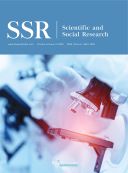Abstract
In the context of the new era, the development of education in border ethnic areas can help stimulate the awareness of self-development of border ethnic groups, enhance endogenous development, promote the transformation of old and new dynamics of economic development, and achieve the goal of high-quality development in the new era. A long-term national strategy, the “Enrich the Borders and the People of the Borders Action” has effectively improved the infrastructure construction and living standards of people living in China’s border areas over the past 20 years. It has immensely promoted industrial restructuring, advanced the construction of the “Chinese national community,” and laid a solid foundation for poverty eradication and the overall actualization of a well-off society. However, we also clearly understand that the border areas are passively performing “blood transfusion” to alleviate poverty. Most of the border areas in China are ethnic areas and relatively poor. This paper attempts to explore the education for the ethnic minorities in the new era of socialism with Chinese characteristics to actualize the development of border areas from passive “blood transfusion” to active “blood creation” development to stop the intergenerational transmission of poverty and promote the sustainable development and modernization of China’s border areas, and ultimately achieve the goal of high-quality development of border ethnic areas.
References
Zhang LJ, Zhao Q, Gong RR, 2020, Research on the Evaluation and Prospect of the Effect of 20 Years of Policy Implementation of the Action to Promote the Borders and Enrich the People: A Survey-Based on the Economy of 140 Counties on the Land Border. Journal of Central University for Nationalities (Philosophy and Social Science Edition), 47(06): 94–107.
President of China: Promoting the Comprehensive Revitalization of Rural Industries, Talents, Culture, Ecology and Organization. China Talent, 2020(06): 2–3.
Zhang Q, (ed) 2017, Seizing the Great Victory of Socialism with Chinese Characteristics in the New Era by Successfully Building a Well-off Society Across the Board, Xinhua News Agency, October 18, 2017.
Xu ZD, 2020, Fostering Will and Wisdom in the Action of Promoting the Border and Enriching the People: The Current Situation, Problems, and Countermeasures. Ethnic Education Research, 2020(6): 13–18.
Zuo MZ, Xiang L, Ma YP, et al., 2019, Helping Will, Wisdom and Learning: Construction of A “Trinity” Model of IT for Precise Poverty Alleviation in Education. E-chemical Education Research, 40(3): 13¬–19+33.
Song CF, Pan SB, 2018, A Legal Discussion on Improving the Poverty Governance System in Ethnic Areas. Social Scientist, 2018(9): 14–18.
Zhang LJ, Su LX, 2020, Research on the Construction of Cultural Industry in Southwest Land Border Crossing. Development Research, 2020(6): 48–55.
Tuo J, 2021, Retrospect and Prospect of 20 Years of Research on “Xingbian Fumin” in China: A Visual Analysis Based on Knowledge Mapping. Inner Mongolia Social Science, 42(04): 204–212.
Jin MM, Luo X, 2019, A Brief Analysis of Maslow’s Hierarchy of Needs Theory. Management Observation, 2019(16): 77–79.
Xie JJ, 2012, A Review of Research on Poverty Alleviation in Education. Fudan Education Forum
Huang JJ, 2017, Exploring the Causes of Cross-Border Ethnic Education Problems in Guangxi and Ways to Solve Them. Education and Culture, 2017(22): 62–63.
Guo JF, Cheng W, 2018, Research on the Mechanism and Path of Precise Poverty Eradication in Ethnic Areas with Special Industries. Development Research, 2018(11): 74–78.
Qiao JZ, Shen JX, Li HD, et al., 2021, Study on Resource Allocation in China’s Compulsory Education Stage in 2020-2035. Journal of East China Normal University (Education Science Edition), 39(12): 59–80.
Qin HX, Li Z, 2021, Poverty Alleviation in Higher Education and the Construction of Human Destiny Community. Journal of Soochow University, 2021(4): 1–7.
State Council, 2019, Notice on Issuing the National Vocational Education Reform Implementation Program, viewed July 20, 2022, http://www.gov.cn/zhengce/content/2019-02/13/content_5365341.htm
Li L, Yang R, 2020, The Dilemma and Path of Rural Vocational Education in Border Ethnic Areas in the Context of Rural Revitalization. Journal of Yunnan Normal University, 52(04): 111–119.
Li T, Wu ZH, Zhou HX, et al., 2020, Study on Strategy of Poverty Alleviation in Education After the Construction of Well-Off Society in China During 14th Five-Year Plan. Education Development Research, 40(23): 30–42
Yang H, Zhao DY, 2022, Research on Current Situation and Countermeasures for the Development of Basic Education Informatization in Minority Areas of Chengde. Journal of Hebei Nationalities Teachers’ College, 42(02): 109–114.
